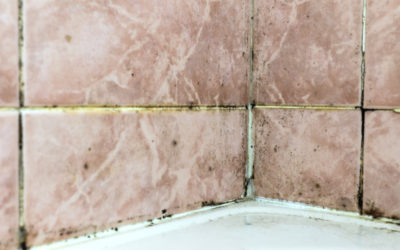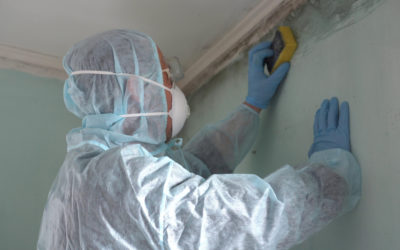Find answers to your general questions
Browse through our FAQs and find the answers to your questions about the restoration of your property
Knowledge Base
Browse through our restoration FAQs and find the answers to your questions.
Call us
Give us a call and get immediate help with the problem you are facing
Request a quote
Request a quote and get an estimate on the restoration service you need from us.
Frequently asked questions
We now have an FAQ list that we hope will help
you answer some of the more common ones.
Mold Damage
1. Does water damage mean mold?
Most people don’t realize that it’s not just serious water damage, such as flooding or a visible leak that leads to mold. Any kind of leak that isn’t properly fixed can cause mold to grow. … Under the right conditions, mold can begin to grow and spread in a matter of 24 to 48 hours
2. How quickly can mold grow from water damage?
mildew and mold will develop within 24-48 hours of water exposure. Even worse, it will continue to grow until steps are taken to eliminate the source of moisture, and effectively deal with the mold problem.
3. Can a small water leak cause mold?
Leaking pipes, no matter how big or small, can cause a multitude of problems, including the development of mildew and mold from water damage. Repeated and undetected leaks are a primary cause of moisture build up behind walls, ceilings, and even flooring, leading to product deterioration and mold infestation.
4. Is mold damage covered by homeowners insurance?
Mold coverage isn’t guaranteed by your homeowners insurance policy. Typically, mold damage is only covered if it’s related to a covered peril. Mold damage caused by flooding would need to be covered by a separate flood insurance policy.
5 How expensive is mold removal?
The average cost of mold remediation is $2,325, with most homeowners spending between $1,500–$3,150 or $15 to $30 per square foot. A small mold removal job costs an average price of $500–$1,500 while a larger job costs around $3,000–$6,000.
6. Does wet plasterboard need to be replaced?
Generally, yes the board should be removed and replaced with an equivalent Gyproc product to maintain the original performance criteria.
7. How can one realize the existence of mold?
In spite of the fact that some species do not cause bad smell, when a musty, moldy odor is mixed with other factors, one will realize the presence of mold . Even if mold is not visible to the naked eye, remediation might be obligatory.Anyhow, Odor alone is not the only factor based on which we can determine whether or not remediation is needed.
8. So what does it mean to abate or remediate mold ?
Mold abatement means the process through which we bring an end to the presence of mold or put in a nutshell,removing mold from your home or business. Remediation means the action of reversing or stopping environmental damage caused by mold.
9. What if I paint the mold out?
To paint the mold is the worst thing you can do because it will still keep on growing under the paint and will peel it off.
10. Can you get sick from having mold in your home?
Having mold in your home won’t necessarily make you sick. But it does have the potential to cause certain health issues.Touching or inhaling mold spores can cause allergy-type symptoms such as:
- runny nose and congestion
- eye irritation
- sneezing
- coughing
- sore throat
- skin rash
- headache
- lung irritation
- wheezing
You may be a higher risk for complications like infection if you have conditions such as:
- allergies
- asthma
- chronic obstructive pulmonary disorder (COPD)
- compromised immune system
- cystic fibrosis
In people with asthma, an allergic reaction to mold can trigger an attack. They may need inhalers to manage symptoms.
Exposure to a large amount of mold can cause a more serious reaction. This type of exposure is usually due to occupational or workplace hazards rather than from exposure to mold in your home.
Water Damage
1. Does water damage get worse over time?
Water damage can cause serious issues in any home and if you don’t spot and deal with it quickly, then it is likely to deteriorate over time. Water damage not only tends to spread, but it can also cause the development of mold, which will grow on any surface it comes into contact with.
2. What happens when water gets in your walls?
Excess water and moisture gets absorbed in wood, drywall, insulation, and wallpaper which can lead to warping, stains, bubbling, and deterioration. Hidden water leaks can also cause mold to grow and spread in areas behind walls and ceilings where it is not easily detected
3. Can you get sick from water damage?
Flood waters can contain harmful bacteria and microbes that can make you sick and linger on your belongings. Toxins, chemicals and contaminants remain on water damaged furniture long after they have been dried. Leave that water in your home too long and mold, bugs and fungus will show up.
4. What month does it start to rain in California?
Unlike most areas of the country, California has distinct wet and dry seasons. Over 90% of California’s annual average precipitation falls from October through April. Rain typically returns by October as the jet stream begins to sag farther south, dragging Pacific frontal systems with it
Wind Damage
1. Is Los Angeles a disaster county?
Los Angeles is particularly vulnerable to the destructive effects of wildfires, flooding, mudslides and earthquakes. Because of the many threats that Los Angeles faces, the importance of readiness as a city and for residents cannot be overstated.
2. How Long Will Santa Ana Winds last?
“Most Santa Ana events peak for a 12- to 24-hour period, then the winds ease,” according to AccuWeather Senior Meteorologist Ken Clark. “However, on rare occasions, strong winds can persist for a few days,” Clark said.
3. What causes high winds in California?
The Diablo wind is created by the combination of strong inland high pressure at the surface, strongly sinking air aloft, and lower pressure off the California coast.
4. Why are Santa Ana winds dangerous?
The National Weather Service issued a stark warning, saying, “this is a particularly dangerous situation due to an unusual duration of extremely dry vegetation, strong winds, and very dry air leading to very critical fire weather conditions.
5. What causes high winds in California?
The Diablo wind is created by the combination of strong inland high pressure at the surface, strongly sinking air aloft, and lower pressure off the California coast.
Fire Damage
1. What are the Fire Damage Restoration Steps for Restoring the Property?
The Diablo wind is created by the combination of strong inland high pressure at the surface, strongly sinking air aloft, and lower pressure off the California coast.
2. Can a burned house be restored?
A fire damage restoration company specializes in helping people recover from fire damage. These companies offer a range of services, including: Securing the house. A restoration company can board up the house and place tarps on the roof immediately after the fire to prevent weather damage
3. How much does fire damage restoration cost?
A typical home or business owner may incur costs between $800 to $93,000 for fire damage restoration services. Restoration costs for an entire home will exceed $100,000. Most property owners pay between $3,200 and $25,000. The national average price for fire damage cleanup is $12,000.
4. How long does fire restoration take?
The fire restoration process
These steps will vary depending on the severity of the fire and can last anywhere from a couple of days to seven months or more.




